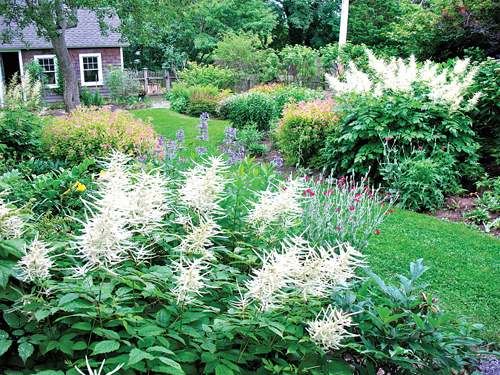Real Estate: Native plants will keep birds and bees in your backyard

No bugs means no birds.
That’s the terse reminder for anyone hoping to encourage a winged presence in their gardens from Diana Van Buren, president and program chair of the North Fork chapter of the National Audubon Society.
Her advice? Start a backyard bee, bird and butterfly garden.
“It’s not just an aesthetic pursuit,” Ms. Van Buren said. “So much of the native plant environment has been compromised in being developed for homes. We are redeveloping the habitat and each garden has the power to undo the damage that’s been done.”
Part of the problem, she said, is America’s bug-killing culture.
“We have to look at insects not as the enemy, but as an important part of the web of life,” she said. Bees, for example, don’t chase people and are essential for agriculture.
“If we didn’t have bees, we wouldn’t have fruit,” Ms. Van Buren said.
Native plants are important to undoing the damage because local insects and birds can’t sustain themselves on imported plants. Ms. Van Buren likened a yard filled with colorful foreign fauna to a wasteland for local wildlife.
“They just don’t recognize it as food,” she said.
Supporting local wildlife is as simple as planting some native shrubs on a property’s periphery. A proven food source for insects, caterpillars and birds can also double in providing privacy.
“Don’t be afraid when your shrub is being eaten by a caterpillar either,” she explained. “If you plant a butterfly garden, you don’t just want flowers or nectar sources. Once a butterfly mates, they lay eggs on the leaves of plants so the caterpillar can eat the leaves and grow. If you don’t have host plants, you don’t have butterflies.”
Native oak trees, black or choke cherry trees, witch hazel, viburnum, elderberry, inkberry, American holly and shad bush are a few of the examples of plantings that help sustain backyard wildlife.
“It’s as simple as visiting your local nursery,” Ms. Van Buren said.
Some good native flowers for butterflies include goldenrod, New England asters, sunflowers and black-eyed Susans.
Monarch butterflies love Asclepias tuberosa, or milkweed, a bright orange flower that Ms. Van Buren said is a gardener favorite and makes lovely flower arrangements.
To learn more about attracting favored fliers, Ms. Van Buren recommended “Bringing Nature Home” by Doug Tallamy and “Butterflies of the East Coast,” a guide to butterflies and their host plants by part-time Greenport resident Guy Tudor.
“If you have an empty backyard and are looking to start a bee, bird and butterfly garden, check out athome.audubon.org, a website devoted to how to support backyard wildlife,” she said. “If you plant it, they will come.”


